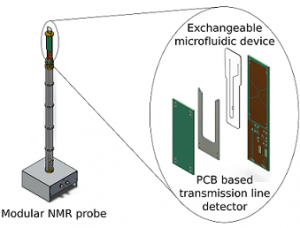The Lab-on-a-Disc (LoaD) approach was conceived in the 1990s as a sub-class of the more generic µTAS (from MicroTotalAnalysingSystems). The µTAS concept was derived ~10 years earlier with the hope to make a complete chemical and, therefore, also biological analysis of all type of liquids in an integrated and automated way. The idea was to create a mini lab in a piece of glass or even plastic by using the shrinkage of all channels and components to obtain highly branched networks of unit operations that allow complex analyses. Most modern desktop analysis machines (like glucose or haemoglobin) are based in some sort on that idea. To move away from work benches with glasses and vials that are handled by highly trained personnel and replace them by microchannels and microchambers where one can perform simple diagnostics automatically, that triggered the idea to make laboratory diagnostic outside of clinics. If the analysis could be performed nearly semi-automatic outside of a clinic’s lab, would the patient still have to come to the clinic for initial tests? Saving the patient the long way to a real hospital, by placing a semi-automated diagnostic in the rural communities, is especially valuable in developing countries were this might take days. One obstacle in that endeavour was the need of precision pumps to drive the liquids through the channels and often also the usage of complex tubing, Lab-on-a-Disc circumvented the need of pumps by spinning the whole microfluidic chip and using the resulting centrifugal forces to drive the liquids. In the last two decades this led to a large variety of the diagnosable diseases using LoaDs.
The original idea of a (µ)TAS system to chemically completely analyse a liquid is and back in the 1980s already was performed much better by another technique – the NuclearMagneticResonance (NMR) Analysis. NMR is based on the modulation of an electromagnetic signal, by the content the liquid, allowing to get information directly from its molecular composition. Many atoms i.e. Hydrogen, when placed in a magnetic field and activated by an electromagnetic wave of a specific frequency, answer by sending back a signal of the same frequency (hence the name resonance). This signal is now not 100% at the same frequency but it is modulated slightly by the magnetic fields caused by the molecules present in the liquid. A spectral analysis of the signal in the frequency domain, therefore, shows characteristic peaks that are fingerprints of the molecules present in the liquid.
Since NMR can be seen as the real TAS system, can an integration of the two not lead to a true µTAS system, ignoring for now the little flaw that the NMR magnets are nearly 2 m high? Both systems use liquid analytes in fairly small quantities (µl to ml). Also, the rotation is beneficial for both, while it drives the LoaDs it is used in NMR to improve the signal quality in a technology called magic angle spinning. Automation in NMR is done via a carousel that loads the test tube sequentially into the machine, the handling of small plugs of sample is one of the key technologies in LoaD and could, therefore, improve the high throughput sample handling. The merging of these two very well-established technologies will allow to improve sample handling in NMR significantly while at the same time shrinking the needed sample volume.
